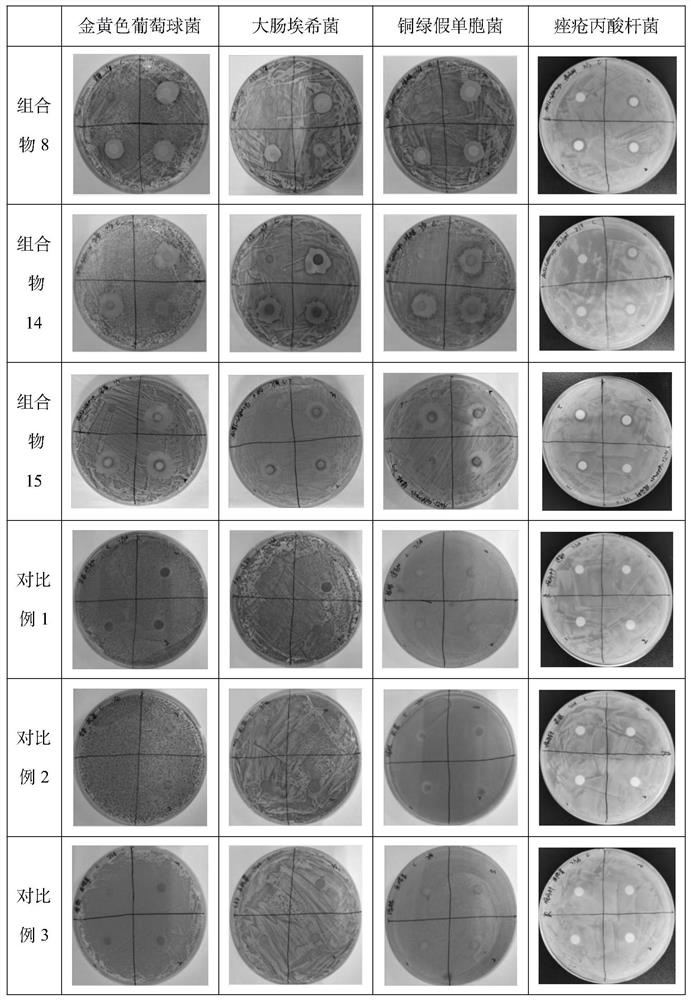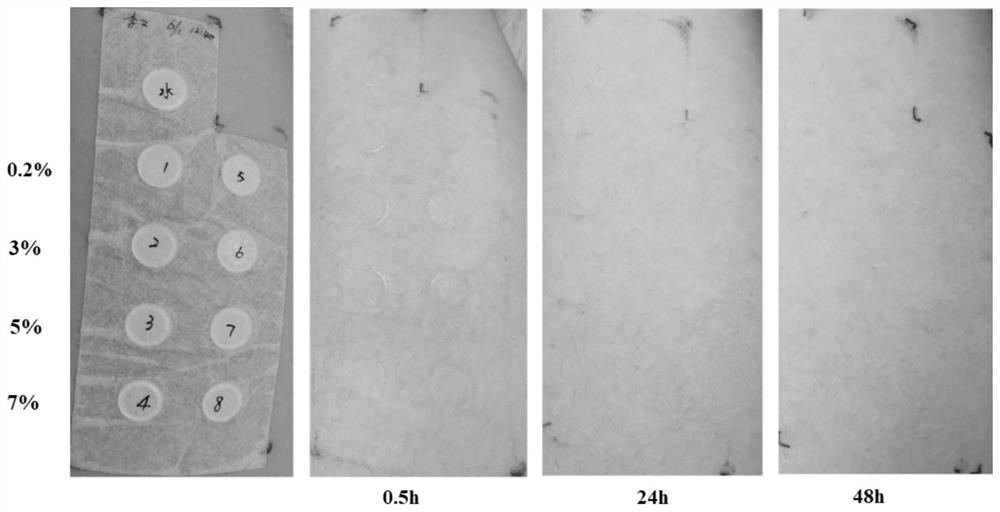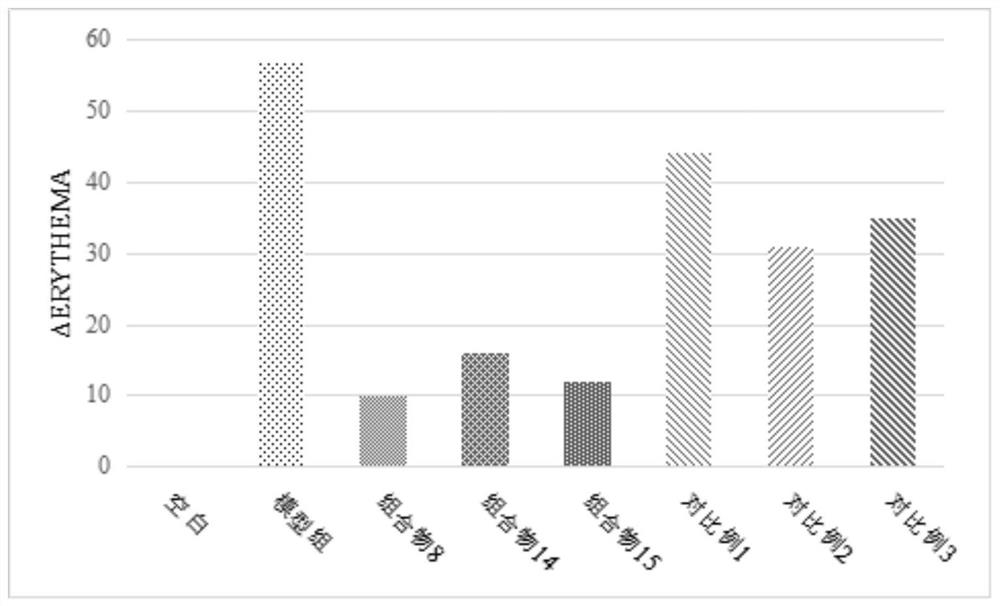Antibacterial repair plant extract composition, and preparation method and application thereof
A technology for extracting and repairing plants, which can be applied in pharmaceutical formulations, cosmetic preparations, and dressing preparations. It can solve problems affecting product safety, organic solvent residues, and limited scope of application. Liquid stability, good antibacterial effect
- Summary
- Abstract
- Description
- Claims
- Application Information
AI Technical Summary
Problems solved by technology
Method used
Image
Examples
Embodiment 1
[0040] The preparation of embodiment 1 antibacterial plant extract composition
[0041] In the following examples and comparative examples of the present invention, the bacteriostatic plant extract composition was prepared by the following process.
[0042] (1) Crush Forsythia, Houttuynia cordata, and Radix Radix respectively, and mix well;
[0043] (2) adding deionized water for extraction, the mass ratio of raw material drug to deionized water is 1:30, the extraction temperature is 90°C, the extraction time is 1.5h, and the extraction frequency is 2 times;
[0044] (3) cooling the extract obtained in step (2) to 25° C., filtering with 200 mesh gauze to obtain the initial filtrate;
[0045] (4) adding clarifier chitosan to the primary filtrate obtained by step (3), and standing at low temperature for 8h;
[0046] (5) Centrifuge the solution obtained in step (4) for 40min, the rotating speed is 5000rpm, filter with a microfiltration membrane with a pore size of 0.2 μm, collect...
Embodiment 2
[0054] Embodiment 2 antibacterial effect detection
[0055] Selection of strains: Staphylococcus aureus, Escherichia coli, Pseudomonas aeruginosa, Propionibacterium acnes; Pseudomonas aeruginosa \ Staphylococcus aureus \ Escherichia coli \ Propionibacterium acnes were selected for the preparation of bacterial solution for the listed species. Preparation: Dilute it with sterile saline to about 1.0x10 5 cfu / ml~1.0x10 6 cfu / ml bacterial suspension. The prepared bacterial suspension should be used within 2 hours, or stored at 2°C to 8°C for no more than 24h.
[0056] Bacteriostatic effect detection: take the functional plant composition obtained in step (7) of Example 1, take a piece of sterile dry filter paper, and add 20 μL of the plant composition solution (10 mg / mL) of the actual concentration to each piece dropwise. Test bacteria inoculation: Take 1mL of each test bacteria suspension and spread evenly on the surface of the nutrient agar medium; paste the antibacterial tes...
Embodiment 3
[0063] Example 3 Cytotoxicity Evaluation Test:
[0064] MTT assay is an experimental method widely used in the detection of cytotoxicity or cell proliferation by measuring the number of living cells. The detection principle is that succinate dehydrogenase (succinate dehydrogenase or mitochondrial dehydrogenase) in living cell mitochondria can make water-soluble The yellow salt MTT (3-[4,5-dimethlythiazole-2-yl]-2,5-diphenyl tetrazolium bromide) is reduced to a water-insoluble blue color and deposited in cells, while dead cells do not have this function. The generated crystalline formazan (formazan) is generally dissolved by adding DMSO (dimethlysulfoxide) to measure the absorbance. The specific experimental method is in 96well multi plate (corning) according to 1X10 4 DMEM medium containing 10% bovine serum and 100 μL of keratinocytes (HaCaT) were inoculated at the density of cells / well, and replaced with serum-free medium after 24 hours of culture. Samples of different con...
PUM
 Login to View More
Login to View More Abstract
Description
Claims
Application Information
 Login to View More
Login to View More - R&D
- Intellectual Property
- Life Sciences
- Materials
- Tech Scout
- Unparalleled Data Quality
- Higher Quality Content
- 60% Fewer Hallucinations
Browse by: Latest US Patents, China's latest patents, Technical Efficacy Thesaurus, Application Domain, Technology Topic, Popular Technical Reports.
© 2025 PatSnap. All rights reserved.Legal|Privacy policy|Modern Slavery Act Transparency Statement|Sitemap|About US| Contact US: help@patsnap.com



